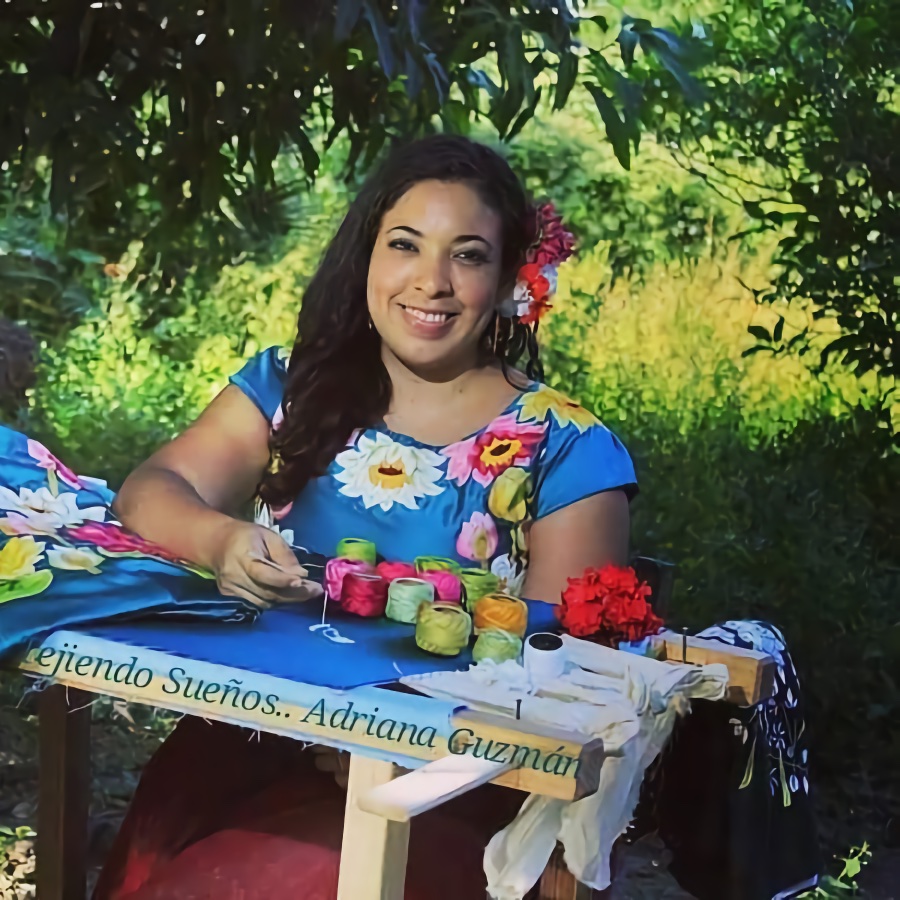
Sunfire, sunset breeze and coconut water and a wink from the iguana in a hammock swinging with the cadence of the tehuana the time slips away
Francisco Hernández Domínguez
The Isthmus of Tehuantepec which is known as “Mexico’s waist” has gone through a very intense multiracial mixture. The textile artisans have preserved the cultural identity of the Zapoteca traditional attire.
There are four traditional textile methods of production in this region:
— Backstrap loom is a Pre-Hispanic technique in which cotton yarns and natural colorants are used to create fabrics. Nowadays is in the seaside of the Isthmus of Tehuantepec where this method is mostly in use.
— “Cadenilla” seam: By using silk threads and a “cadeneta” sewing machine the artisans create representations of stars and geometrical shaped objects. They master symmetry and intersection codices to create more than the 32 patterns comprised in this technique.
— Crochet embroidery: Flower shapes made with silk and cotton threads.
— Short darner embroidery: This technique was used to create a blue roses over a dark blue velvet pattern which we used to design the “Tehuana” look.
The Tehuana dress is in many ways the result of the intense multi-ethnic mixture history of the Isthmus of Tehuantepec, this traditional apparel is a symbol of the constant fight to preserve the Zapoteca heritage and to strength our identity and acknowledge of the history of Mexico.

The Isthmus of Tehuantepec which is known as “Mexico’s waist” has gone through a very intense multiracial mixture. The textile artisans have preserved the cultural identity of the Zapoteca traditional attire.
There are four traditional textile methods of production in this region:
— Backstrap loom is a Pre-Hispanic technique in which cotton yarns and natural colorants are used to create fabrics. Nowadays is in the seaside of the Isthmus of Tehuantepec where this method is mostly in use.
— “Cadenilla” seam: By using silk threads and a “cadeneta” sewing machine the artisans create representations of stars and geometrical shaped objects. They master symmetry and intersection codices to create more than the 32 patterns comprised in this technique.
— Crochet embroidery: Flower shapes made with silk and cotton threads.
— Short darner embroidery: This technique was used to create a blue roses over a dark blue velvet pattern which we used to design the “Tehuana” look.
The Tehuana dress is in many ways the result of the intense multi-ethnic mixture history of the Isthmus of Tehuantepec, this traditional apparel is a symbol of the constant fight to preserve the Zapoteca heritage and to strength our identity and acknowledge of the history of Mexico.
Sunfire, sunset breeze and coconut water and a wink from the iguana in a hammock swinging with the cadence of the tehuana the time slips away
